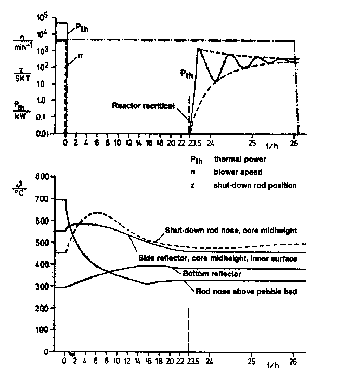 Trainloads of coal power the US electric grid
Trainloads of coal power the US electric gridA typical 1,000 megawatt coal fired electric plant burns a mile-long train of coal every day. Burning these 11,000 tons of carbon fuel creates 3.6 times as much carbon dioxide, because each C12 binds to two O16 atoms. If we were to capture all that carbon dioxide, refrigerate and liquefy it, it would fill a train of refrigerated tank cars over 3 1/2 miles long! Remember, this is for one day, for one power plant of at least 400 in the US. Clean coal advocates propose to sequester these liquids.
 US Carbon Dioxide Source (US EPA)
US Carbon Dioxide Source (US EPA)
Coal contributes the energy for half the electricity generated in the United States. It is relatively inexpensive and readily available, with centuries of supply available. However, coal is the largest source of carbon dioxide emissions into the atmosphere.
 Proposed new US Coal Burning Electric Power Plants
Proposed new US Coal Burning Electric Power PlantsA 2007 EPA study reveals that the electric power industry plans to build 159 new coal electric generation plants in the next years, to generate 96,000 megawatts of power at a construction cost of $141 billion. China is building one new coal fired power plant
every week. China and the US seem to be vying to be the world's top CO2 emitter, with China projected to pass the US in the pollution race in 2009.
Coal is more than a source of electric power. Coal gasification can produce liquid transportation fuels, as SASOL is already doing in South Africa. China is to build 8 liquefaction plants by 2020, with output sufficient to displace 10% of China's oil imports. The process captures about half the energy from the coal. The rest is lost as heat with the release of carbon dioxide. In all, burning transportation fuel produced from coal releases twice the CO2 that using petroleum sourced fuels does.
Clean coal comes from sequestering carbon dioxideThe coal industry and environmentalists talk about carbon capture. The idea is to capture the carbon dioxide emitted from coal burning power plants and store it, sequestered from the environment. Two commonly proposed places to sequester the CO2 are under ground or under the sea. To pump more oil from depleted oil fields CO2 has successfully been pumped into the ground to force the oil out. But there are not nearly enough such places for all the CO2 the US currently emits. The place with enough room is the ocean. Liquefied CO2 could be pumped to the depths of the ocean, where it would remain liquid because of the immense water pressure miles below the surface. You can learn more at the
EPA web site.
Sequestration is today only a promising future technology. No large scale sequestration is taking place. New technologies will be needed, because today's costs are too high --
$150 per ton of carbon. Compare this to the $40 per ton cost of the coal, and estimate the effect on electric power costs.
The United States Department of Energy did
establish seven regional partnerships to explore sequestration. In October, 2007, DOE
awarded $318 million for three demonstration projects to sequester CO2 underground.
Will the sequestered CO2 somehow leak back into the environment? In 1986
Lake Nyos in Cameroon was saturated with CO2 from volcanic sources. An unknown geological event overturned the supersaturated water at the bottom of the lake, bringing it to the surface where 1.6 million tons of CO2 effervesced into the atmosphere. The heavier-than-air gas suffocated over 1,000 people. Geologists say this will not happen with sea-sequestered CO2. The 1.6 million tons is about the amount of CO2 produced in about 40 days' operation of one large coal fired power plant.
Coal Integrated Gasification Combined Cycle can help
Combined cycle gas turbines have been successfully used in natural gas fired power plants. They generate power by burning fuel in a gas turbine engine, much like a jet aircraft engine. They also capture heat to make steam to generate additional power. Hence the name
combined cycle. This technology is becoming applicable to the coal industry, too. The Integrated Gasification Combined Cycle (IGCC) plant may have an
efficiency of 50-60%, compared to the typical 33% efficiency of today's coal plants. Sequestration advocates favor new IGCC plants because the carbon dioxide can be more economically captured. Of the 159 or so proposed new US coal plants, only 32 have been proposed.
Only a handful are moving forward. None are in operation. The carbon capture technology has not been engineered and is not included in the plans. IGCC plants cost 10-15% more than pulverized coal plants.
But wouldn't IGCC plants be a good idea anyhow if they have
50% efficiency rather than 33%? We could make the same electricity with only 33/50 of the coal? They would reduce CO2 emissions by 33%.
Compare Coal Power to PBR Nuclear PowerCoal plants are the major source of carbon dioxide the US; nuclear plants do not emit CO2.
Clean, safe nuclear power exists; clean coal is a future technology. Carbon dioxide sequestration on the needed scale is an untested, emerging technology. Its safety needs proving. The expense would double the cost of electric power.
Per kilowatt hour produced, the death rate in the coal power industry is 40 times that of the nuclear power industry.
Coal has a role in industry. Coal or carbon dioxide from existing coal power plants can combine with hydrogen from high temperature gas pebble bed reactors to form vehicle fuels such as ethanol or methanol.
The website
nuclearoil.com proposes a radical use for coal fired power plants -- replacing the boilers with nuclear reactors for heat.
 or
or  or
or 



































